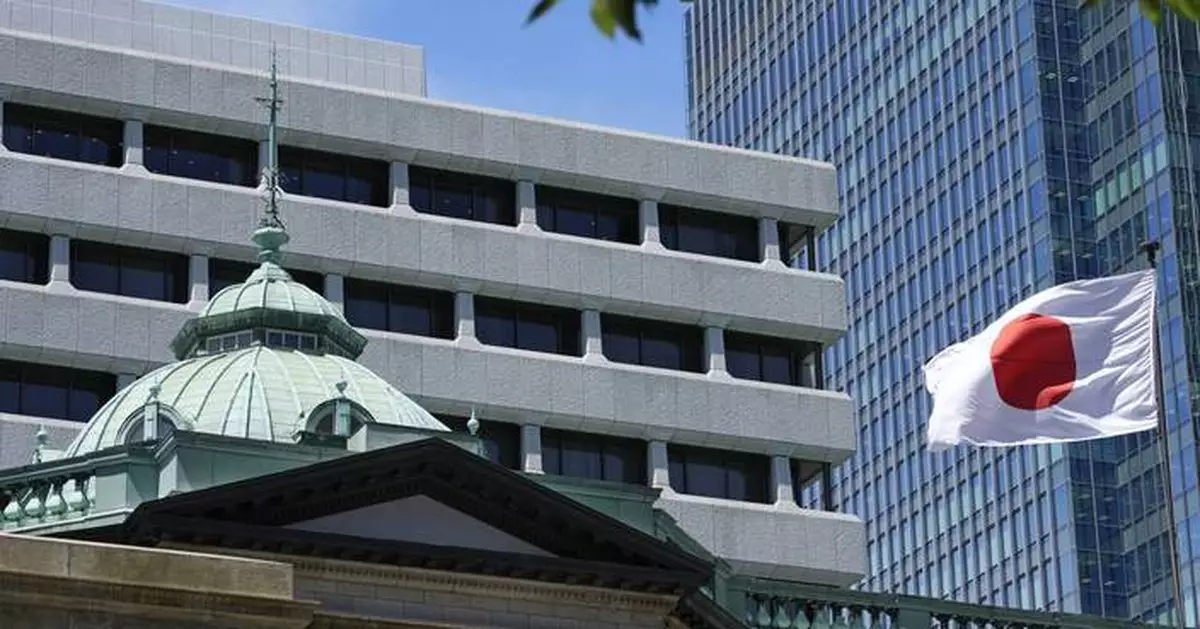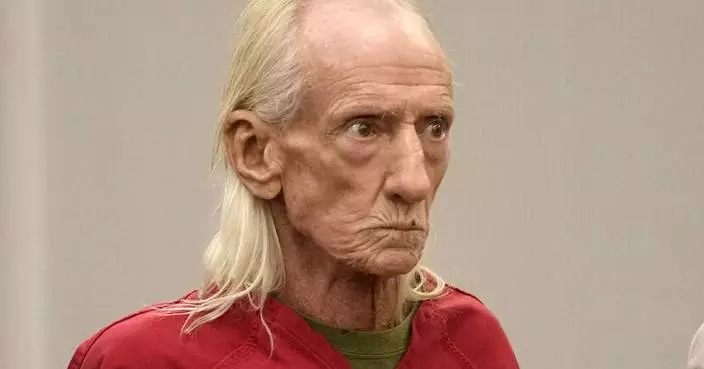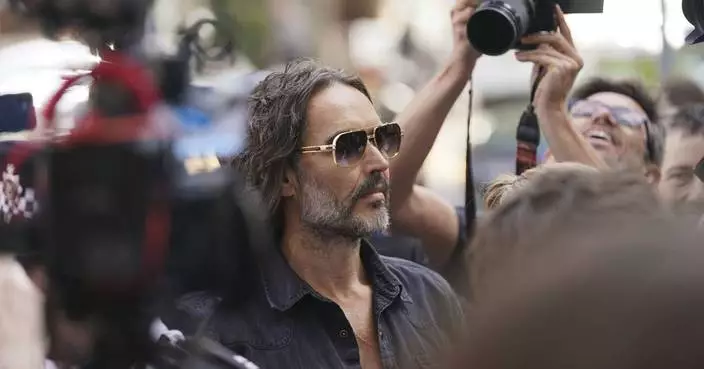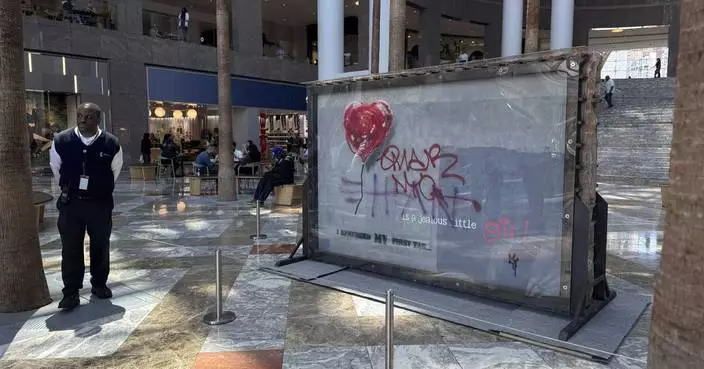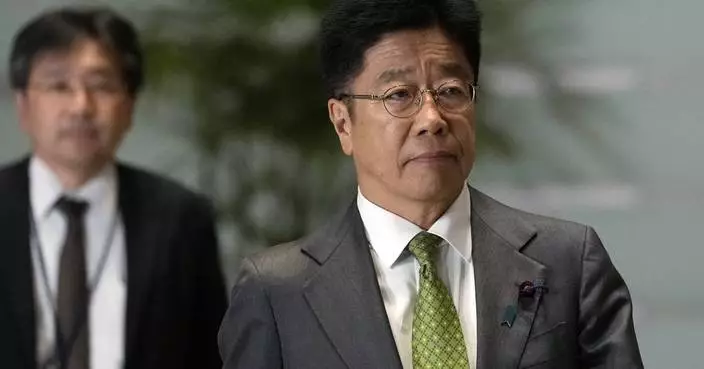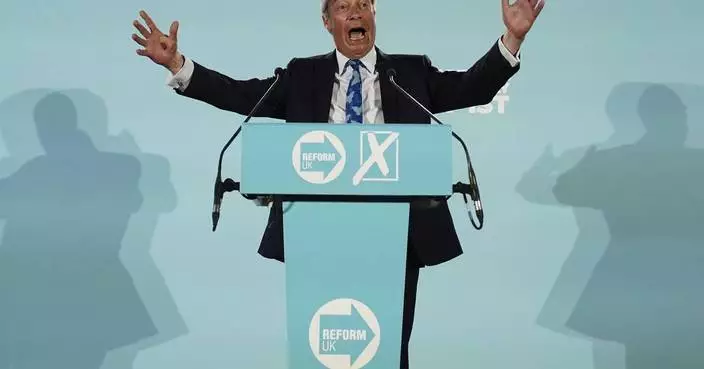TOKYO (AP) — The Bank of Japan raised its key interest rate Wednesday to about 0.25% from a range of zero to about 0.1%, acting to curb the yen’s slide against the U.S. dollar.
The move was widely expected, and the yen gained sharply against the dollar ahead of and after Wednesday’s decision, trading below 152 yen. Concerns have been deepening about the yen's recent drop to 160-yen levels to the dollar. That hurts an economy that imports almost all its oil, as well as other items like food.
The decision on the overnight call rate came just four months after the central bank raised its key rate above zero for the first time in 17 years.
Bank of Japan Gov. Kazuo Ueda told reporters the action came because the foundation of the Japanese economy was relatively solid, with gradual price rises accompanied by wage increases, despite worries about personal spending holding up as prices rose.
He acknowledged additional rate hikes may be coming within this year, depending on how the economy holds up, including how the latest rate increases may affect economic activity and prices. He declined to give a specific date.
“In the long term, we think that adjusting longtime extremely low interest rates shouldn't be rushed, and overall risks can be reduced,” he said.
Share prices in Tokyo rose after the decision, with Japan's benchmark Nikkei 225 finishing 1.5% higher.
Japan's central bank has kept interest rates near or below zero for nearly a decade, seeking to spur inflation in what has been a deflationary economy, hoping to sustain stronger growth for one of the world’s largest economies.
Ueda said Wednesday that he did not want to come out and say that Japan had escaped deflation, but he stressed that prices seemed to be steadily increasing.
The zero-rate strategy was controversial. When wages failed to keep pace with price increases, consumers tended to spend less rather than more. A weak yen has pushed prices in Japan higher since it makes imported gas, oil and other necessities more expensive. The main index of inflation has exceeded the BOJ’s target of about 2% for months.
“Inflation expectations of firms and households have risen moderately,” the BOJ said in its policy statement. “The year-on-year rate of change in import prices has turned positive again, and upside risks to prices require attention.”
The ultra-lax monetary policy also involved massive central bank purchases of Japanese government bonds and other assets to inject cash into the economy. The BOJ has been moving toward unwinding that but was wary of stifling growth by raising the cost of borrowing.
On Wednesday, it said it would reduce the amount of its purchases, long at tens of trillions of yen a month, so that they will be about 3 trillion yen ($19 billion) in the January-March quarter of 2026, or about half of the current 6 trillion yen ($39 billion).
Ipek Ozkardeskaya, senior analyst at Swissquote Bank, noted the Bank of Japan had used language that “was quite bullish on prices," meaning that more hikes were likely. Analysts say the central bank's focus was on what many see as the overly weak yen, while taking care not to set off any negatively dramatic overreactions in the economy.
The central bank shifted away from a negative policy rate only in March, raising the overnight call rate for banks to 0.1% from minus 0.1%.
The dollar’s gains have reflected high interest rates in the United States, where the Federal Reserve is forecast to cut its main rate in September and to hold steady at a policy meeting later Wednesday. The Bank of England was due to issue a rate decision on Thursday.
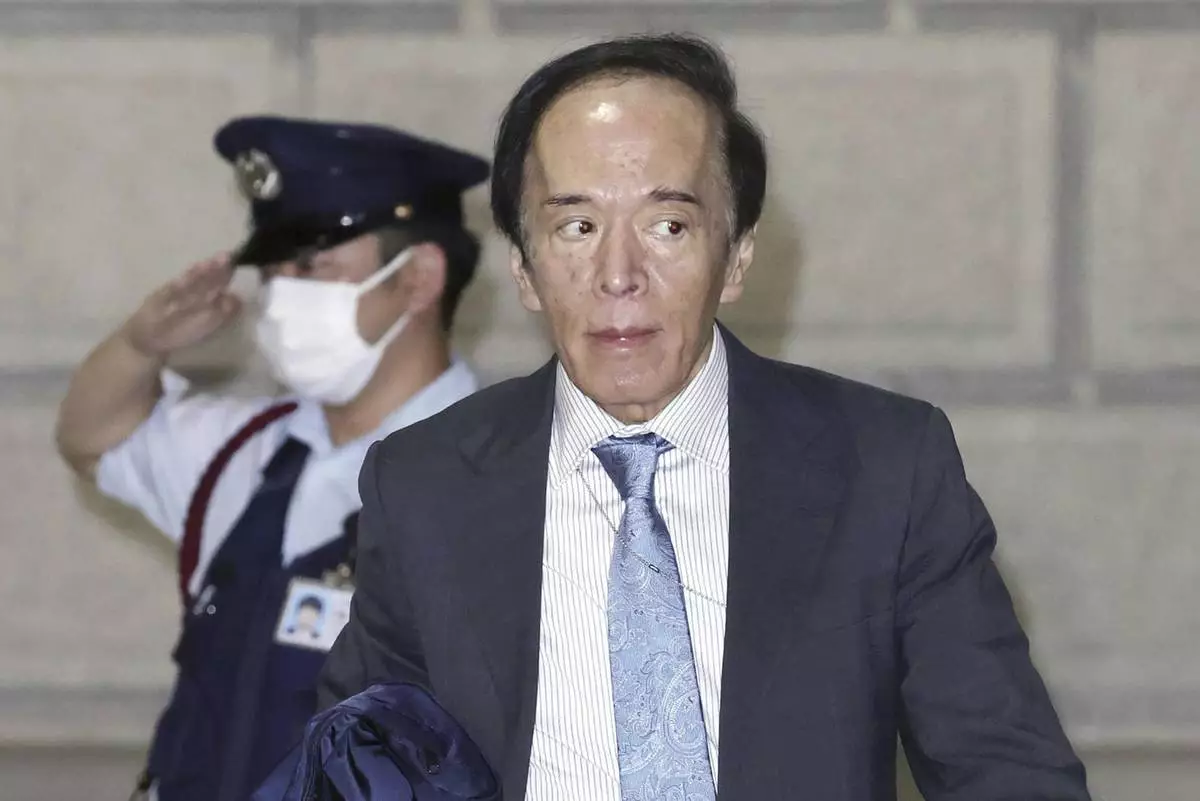
Bank of Japan Gov. Kazuo Ueda arrives at the bank's headquarters in Tokyo Wednesday, July 31, 2024. The Bank of Japan raised its key interest rate Wednesday to about 0.25% from a range of zero to about 0.1%, acting to curb the yen’s slide against the U.S. dollar. (Kyodo News via AP)
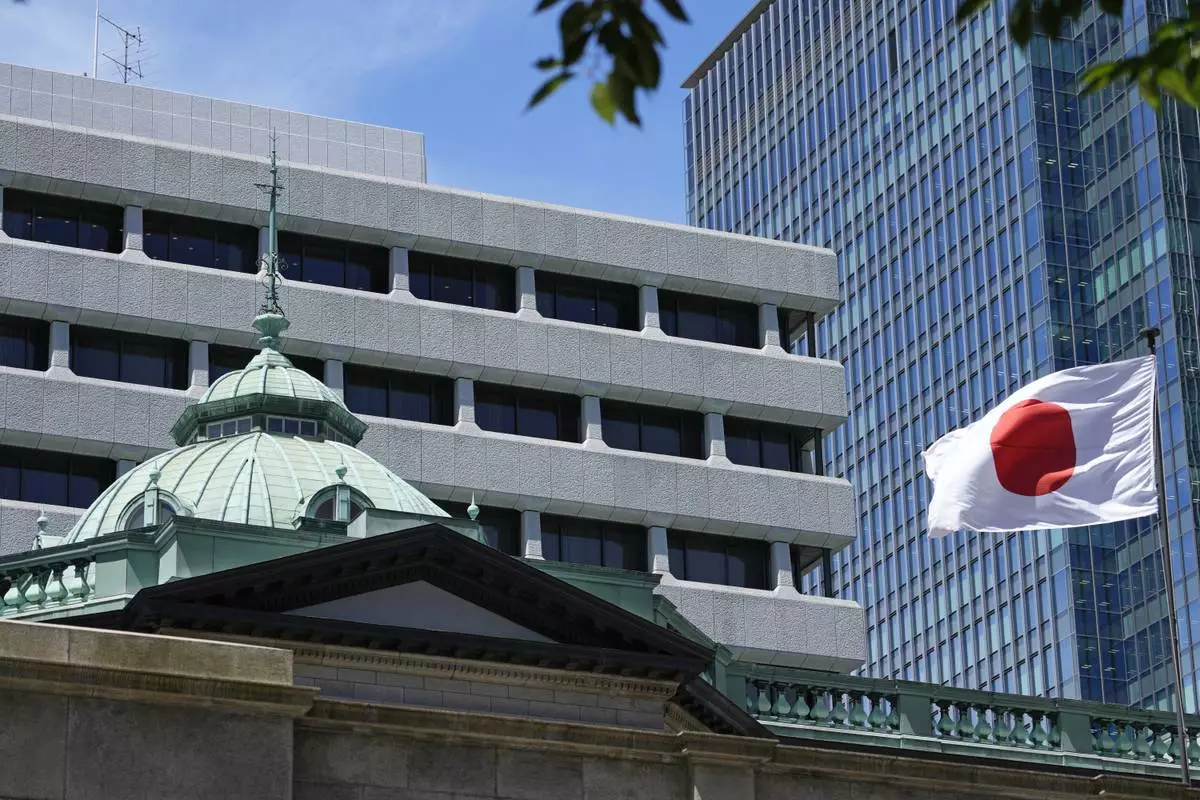
FILE - A Japanese flag flutters at the Bank of Japan headquarters in Tokyo, July 29, 2022. The Bank of Japan raised its key interest rate Wednesday, July 31, 2024, to .25% from 0.1%, acting to curb the yen’s slide against the U.S. dollar. (AP Photo/Shuji Kajiyama, File)
When NBC carried the Kentucky Derby for the first time in 2001, the broadcast lasted only 90 minutes.
On Saturday, when it carries the Run for the Roses for the 25th time, 90 minutes wouldn’t be enough for all the feature stories that will run leading up to post time.
NBC Sports will present 12 1/2 hours of coverage across two days on NBC, USA Network and Peacock. There will be five hours for Friday’s Kentucky Oaks on USA Network and Peacock. Saturday’s coverage begins on USA Network at noon ET before moving to NBC at 2:30 p.m. while Peacock will stream all 7 1/2 hours.
“So much has changed since we first started in 2001. At that time, we thought 90 minutes to cover a two-minute race. How are we going to fill all this time? Now we are still trying to figure out how we’re going to get this story in and that story in because there are so many great stories to tell,” said Donna Brothers, the only member of the broadcast team involved with all 25 Derbys on NBC.
NBC has done five hours of coverage on the main network on Derby Day since 2018. Sam Flood, the executive producer and president of NBC Sports Production, said the true evolution behind adding more hours while making the coverage appeal to a cross-section of viewers began after he produced his first Derby in 2006.
“I remember getting done with the show, which I think was two hours. I kept thinking, we can do so much more,” Flood said. “There are so many assets here that should be showcased, and that’s when we started blowing it out, adding more hours and slowly shifting more and more hours on to NBC and off the cable platforms.”
The expansion has also included the Kentucky Oaks. It started airing on Bravo in 2009 before moving to the NBC Sports Network and then USA Network.
The Derby broadcast has evolved into one of the most diverse sports events that NBC does yearly and is on par with the Olympics, which it carries once every two years, and the Super Bowl, which it has once every four years.
It also might be the only place where a viewer can see fashion, recipes from one of the hosts of Bravo’s “Top Chef,” and race predictions from NBC News chief data analyst Steve Kornacki.
Mike Tirico, the host of NBC’s coverage since 2017, said doing the Derby served as good preparation for hosting the Olympics as well as a stint as a guest host on the “Today” show last week.
“My time doing the Derby helped me to do the ‘Today’ show last week, not vice versa,” he said. “This show is so cool. It goes from speed figures to fascinators. It goes from betting to bourbon. We cover it all in the five hours with a great team of people who dive in and take their space and own it. We all build towards the race. The audience does the same.”
Tirico succeeded Tom Hammond as host. Hammond, a University of Kentucky graduate, was a guiding force around NBC’s early coverage and introducing the sport’s most prominent personalities to viewers.
Lindsay Schanzer, the supervising producer of NBC’s coverage, said one of the advantages of having nearly 4 1/2 hours leading up to post time at 6:57 p.m. ET is the chance to focus on the stories of the 20 horses that will line up in the starting gate.
Among the stories planned are the return of trainer Bob Baffert — who served a three-year suspension after Medina Spirit failed a drug test — 89-year-old trainer D. Wayne Lukas and Michael McCarthy, the trainer of prerace favorite Journalism, whose family was displaced from home in Southern California due to the wildfires.
Because of the many different topics in the broadcast, Schanzer has an interesting approach in how she books the coverage with what she calls a colors document, where each element of coverage has its own color.
“I like to look at it from a broad perspective to make sure there’s not too much of one color in one area, and every color is kind of represented across the show so that if you’re watching it, you’re getting a little bit of a taste of everything,” she said. “One color could be a fashion element, one could be Kornacki’s insights, one could be an interview with a horseman. I try to look at it in a holistic way like that.”
The approach has certainly worked. Last year’s broadcast averaged 16.7 million viewers, the largest Derby audience since 1989. That included an average minute audience of 714,000 streaming on Peacock.
Overall, 11 of the past 15 Derbys held in May have averaged at least 15 million.
“We’ve had all kinds of things happen (since 2001), and that’s what’s so unique about the sport, but specifically about the Derby,” said Jon Miller, NBC Sports president of acquisitions and partnerships. “You have 20 horses that come into that gate and long shots that can pull off the upset. You have favorites, you have great ownership stories, and you have legendary trainers. Who knows who is going to surprise this year? But that’s what’s great about it.”
AP horse racing: https://apnews.com/hub/horse-racing and Derby coverage: https://apnews.com/hub/kentucky-derby
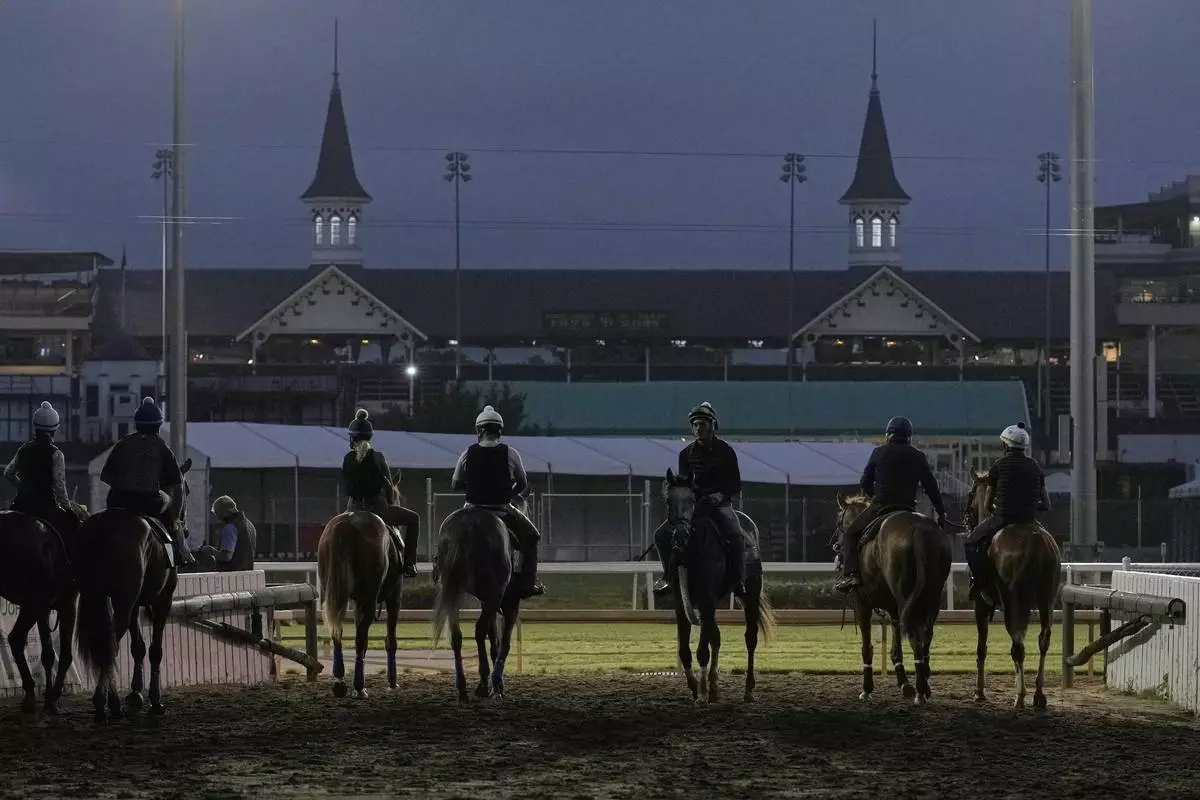
Horses workout at Churchill Downs Wednesday, April 30, 2025, in Louisville, Ky. (AP Photo/Charlie Riedel)




